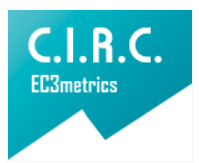Music therapy, speech and mood
Musicoterapia, habla y estado de ánimo Effect in people with Parkinson's disease
Main Article Content
Downloads
Publication Facts
Reviewer profiles N/A
Author statements
Indexed in
- Academic society
- Bogotá: Corporación Universitaria Iberoamericana
- Publisher
- Bogotá: Corporación Universitaria Iberoamericana
Article Details
Atkinson-Clement, C., Sadat, J., & Pinto, S. (24 de Jun de 2015). Behavioral treatments for speech in Parkinson’s disease: meta-analyses and review of the literature. (F. Medicine, Ed.) Future Medicine, 5(3), 167-268.
Baker, F., & Wigram, T. (2005). Songwriting; Methods, Techniques and Clinical Applications for music Therapy Clinicians, Educators and Students. (F. Baker, & T. Wigram, Edits.) London and Philadelphia: Jessica Kingsley Publishers.
Baker, F., Tamplin, J., & Kennelly, J. (2006). Intervention for communication rehabilitation , Interventions to facilitate emotional adjustment. En F. Baker, & J. Tamplin, Music theraphy methods in neurorehabilitation, A clinician’s manual (Vol. 1, págs. 138-185-193-218). London and philadelphia: Jessica Kingsley Publishers.
Bolluk, B., zel-Kizil, E. T., Akbostanci, M. C., & Atbasoglu, E. C. (1 de October de 2010). Social Anxiety in Patients. J Neuropsychiatry Clin Neurosci, 22(4), 390 - 394.
Chanda, M. L., & Levitin, D. J. (April de 2013). The neurochemistry of music. Trends in Cognitive Sciences, 17(4), 179 -193.
Chaudhuri, K. R., & Fung, V. S. (2017). Fast Facts: Enfermedad de Parkinson.Reino Unido: Health press.
Di Benedetto, P., Cavazzon, M., Mondolo, F., Rugiu, G., Peratoner, A., & Biasutti, E. (Mar de 2009). Voice and choral singing treatment: a new approach for speech and voice disorders in Parkinson’s disease. European Journal of Physical and Rehabilitation Medicine, 45(1), 13-9.
E.Starkstein, S., Dragovic., M., Dujardin., K., Marsh, L., Martinez-Martin, P., M.Pontone, G., . . . F.G.Leentjens, A. (December de 2014). Anxiety Has Specific Syndromal Profiles in Parkinson Disease: A Data-Driven Approach. The American Journal of Geriatric Psychiatry, 22(12), 1410 -1417.
Elefant, C., Baker, F. A., Lotan, M., Lagesen, S. K., & Skeie, G. O. (2012). The effect of group music therapy on mood, speech, and singing in individuals with Parkinson’s disease--a feasibility study. Journal of Music Therapy, 49(3), 278-302.
Even, C., & Weintraub, D. (2012). Is depression in Parkinson’s Disease (PD) a specific entity? Journal of affeective disorders, 139( 2) , 10 3 -112 .
Fujii, S., & Wan, C. Y. (13 de Octubre de 2014). The role of rhythm in speech and language rehabilitation: the SEP hypothesis. (E. Altenmüller, Ed.) Frontiers in human nerosciencie, 8(777), 1-15.
Garcia, J. O., Rodriguez, J. G., & Aguiar., V. M. (June de 2000). AHUMADA: A large speech corpus in Spanish for speaker characterization and identification. Speech Communication, 31(2-3), 255-264.
Gerald J, C. (August de 1963). Speech Characteristics of Patients with Parkinson’s Disease: I. Intensity, Pitch, and Duration. Journal of speech and hearing disorders (ASHA), 28, 221 - 229.
Haneishi, E. (2001). Effects of a music therapy voice protocol on speech intelligibility, vocal acoustic measures, and mood of individuals with Parkinson’s disease. Pubmed, 38(4), 273-90.
Hirose, H. (1986). Pathophysiology of Motor Speech Disorders (Dysarthria). Folia Phoniatrica et Logopaedica, 38(2-4), 61-88.
Jackson Menaldi, M. C. (2005). La voz normal. Buenos aires[ar]: Editoril Medica Panamericana.
Koller, W., & Melamed, E. (2007). Parkinson’s Disease and Related Disorders(Vol. 83).
McFerran, K., & Teggelove, K. (2011). Music Therapy with Young People in Schools: After the Black Saturday Fires. voices a world forum for music therapy, 11(1), 1-16.
McGill University. (September de 2013). Neuromotor Disorders Winter 2013. SCSD 609, 1-5.
Merrett, D. L., Peretz, I., & Wilson, S. J. (02 de June de 2014). Neurobiological, cognitive, and emotional mechanisms in Melodic Intonation Therapy. (Teppo Särkämö, Ed.) Frontiers in Human Neuroscience, 8.
Miranda, M. C. (1984). Enfermedad de Parkinson y Depresión. Revista Chilena de Neuro-psiquiatría, 22(4), 281-283.
Oriola, V. C. (2012). El abordaje plurimodal en musicoterapia , para el desarrollo de habilidades comunicativas desde el recurso de las canciones.
Pereira, I., & Vargas, G. (2005). Efectos del estado de animo inducido sobre el recuerdo de palabras cargadas efectivamente. Venezuela, Caracas.
Pinto, S., Tripoliti, C., Ozsancak, E., Thobois, S., Limousin-Dowsey, P., & Auzou, P. (September de 2004). Treatments for dysarthria in Parkinson’s disease. The Lancet Neurology, 547-556.
Sanz Fernández, J. (2001). Un instrumento para evaluar la eficacia de los procedimientos de inducción de estado de ánimo: la “Escala de Valoración del Estado de Ánimo” (EVEA). Universidad complutense, 27(111) , 71-110 .
Särkämö, T., Altenmüller, E., Rodríguez-Fornells, A., & Peretz, I. (09 de March de 2016). Editorial: Music, Brain, and Rehabilitation: Emerging Therapeutic Applications and Potential Neural Mechanisms. (H. H. R., Ed.) Frontiers in human neuroscience, 1-5.
Shih, L. C., Piel, J., Warren, A., Kraics, L., Silver, A., V Vanderhorst, D. S., & Tarsy., D. (18 de Jun de 2012). Singing in groups for Parkinson’s disease (SING-PD): a pilot study of group singing therapy for PD-related voice/speech disorders. Pubmed, 18(5), 48-52.
Starkstein, S. E., Preziosi, T. J., Bolduc, P. L., & Robinson., R. G. (1990). Depression in Parkinson’s disease. Journal of Nervous and Mental Disease, 178(1), 27-31.
StataCorp LLC. (2014). Stata Data analysis and statistical software. Obtenido de StataCorp LLC: https://www.stata.com/company/
Taylor, D. B. (06 de Diciembre de 2010). Fundamentos biomédicos de la musicoterapia, en español. (C. Barbosa, Ed.) Maestría en Musicoterapia de la Facultad de Artes., 1.
Thaut, M. (2007). Rhythm, Music, and the Brain: Scientific Foundations and Clinical Applications (Studies on New Music Research) (Vol. 1). EE. UU. : Routledge.
Thaut, M. H., McIntosh, K. W., McIntosh, G. C., & Hoemberg., V. (2001). auditory rhythmicity enhances movement and speech motor control in patients with parkinson’s disease. functional neurology, 16(2), 163-172.

















